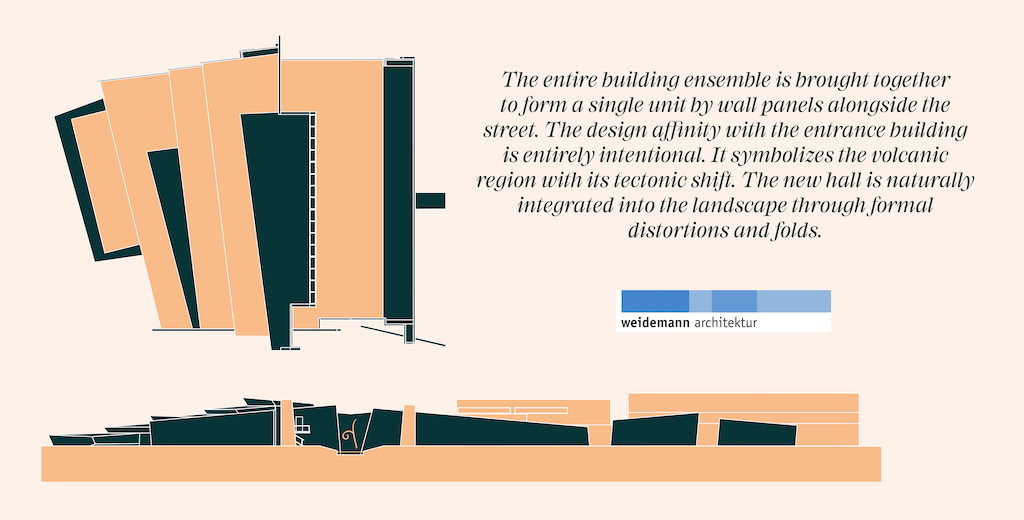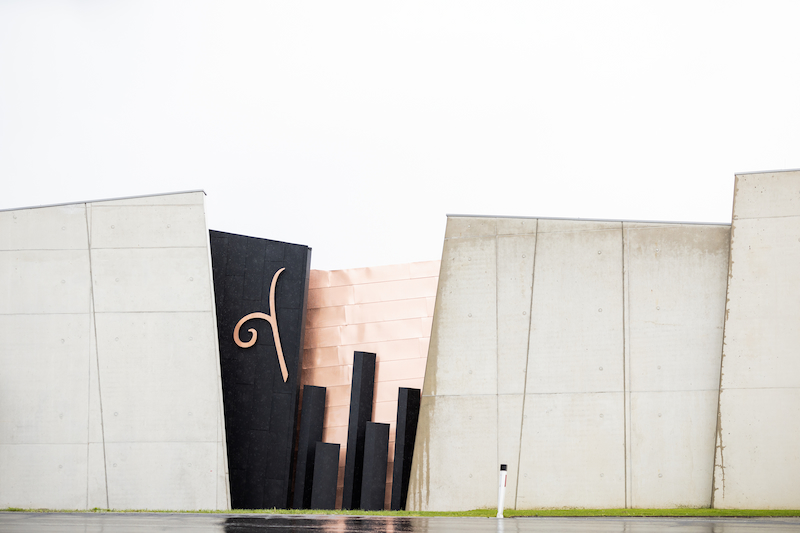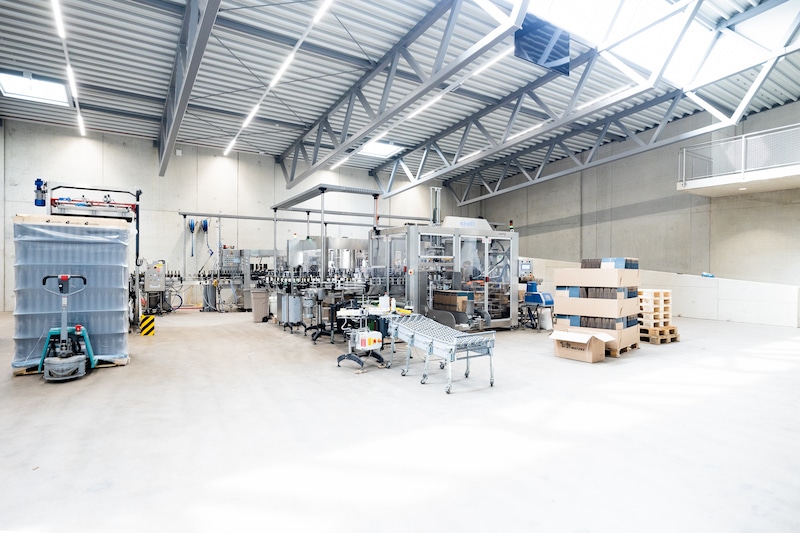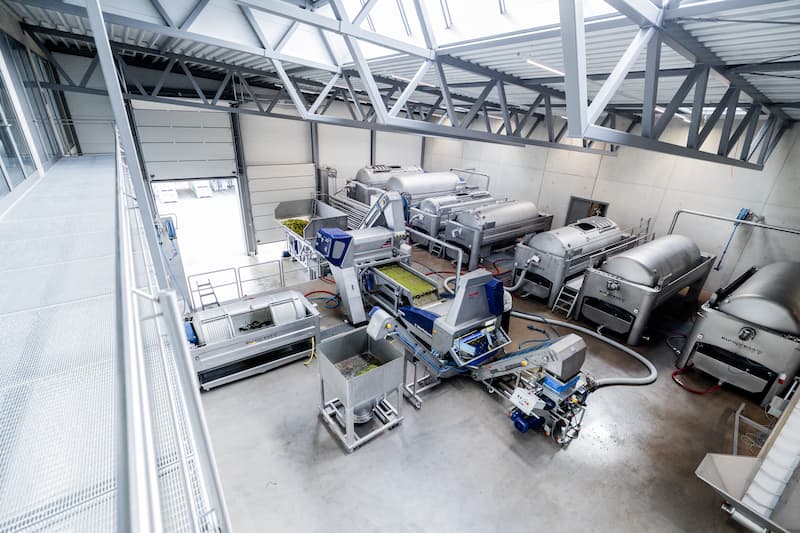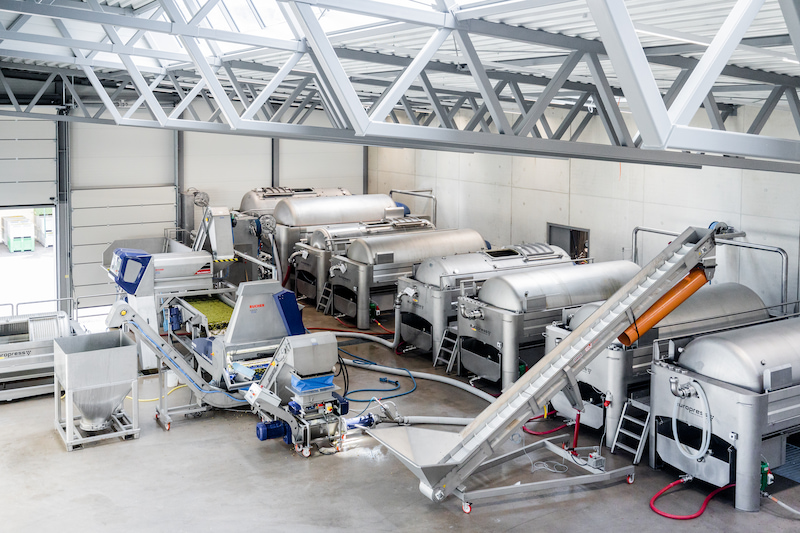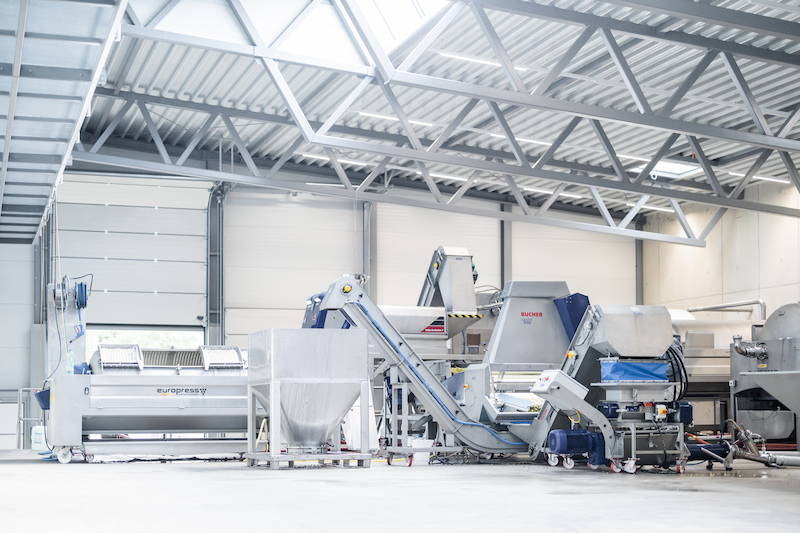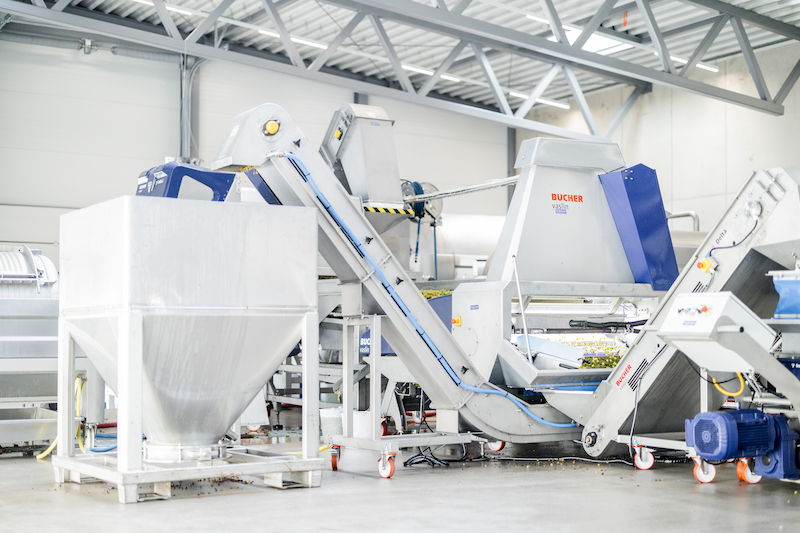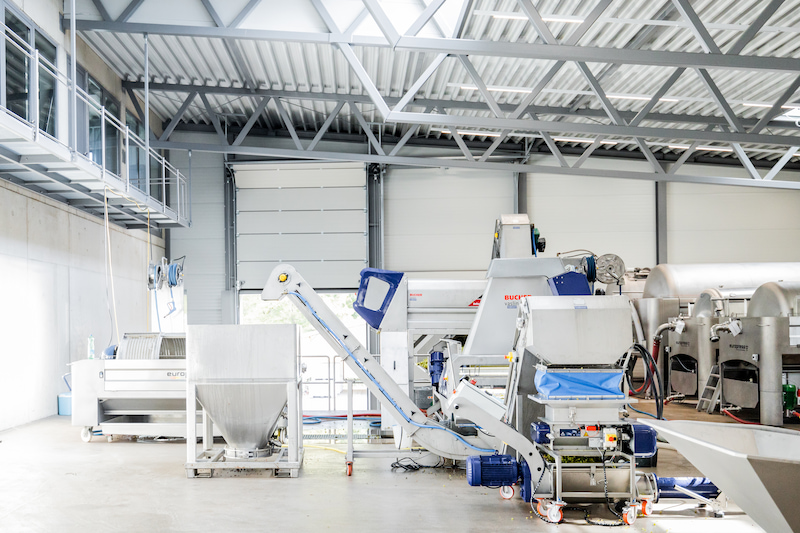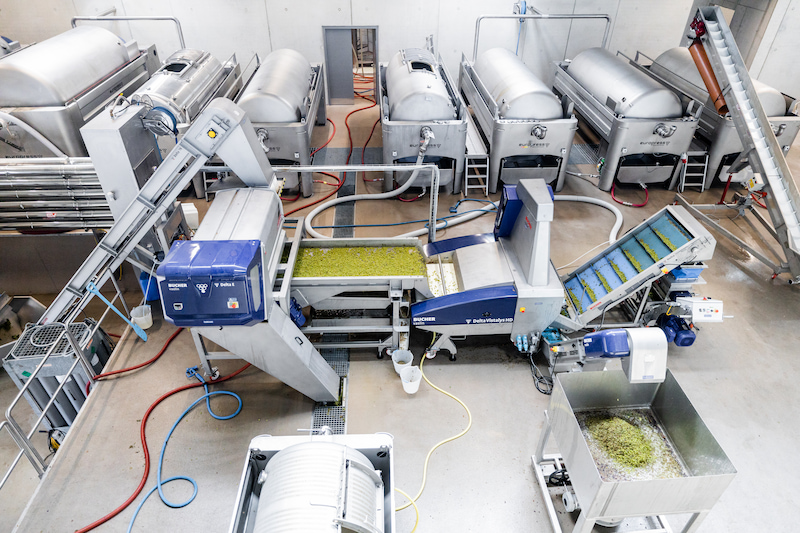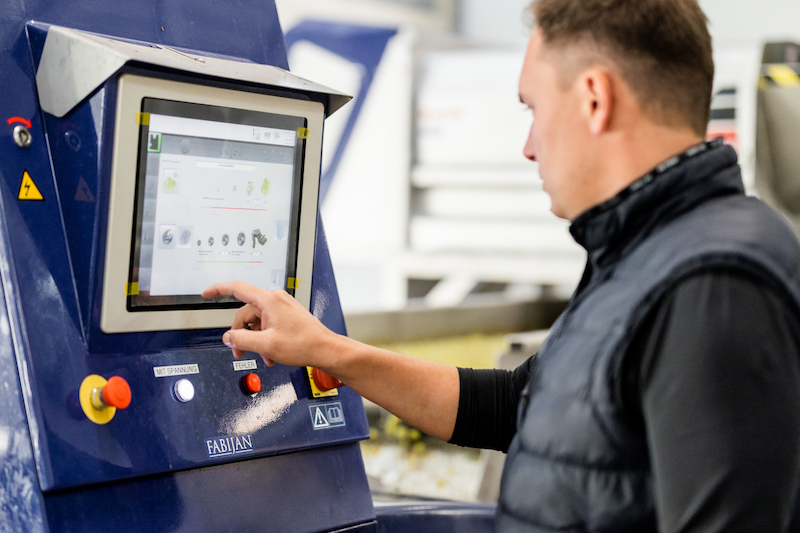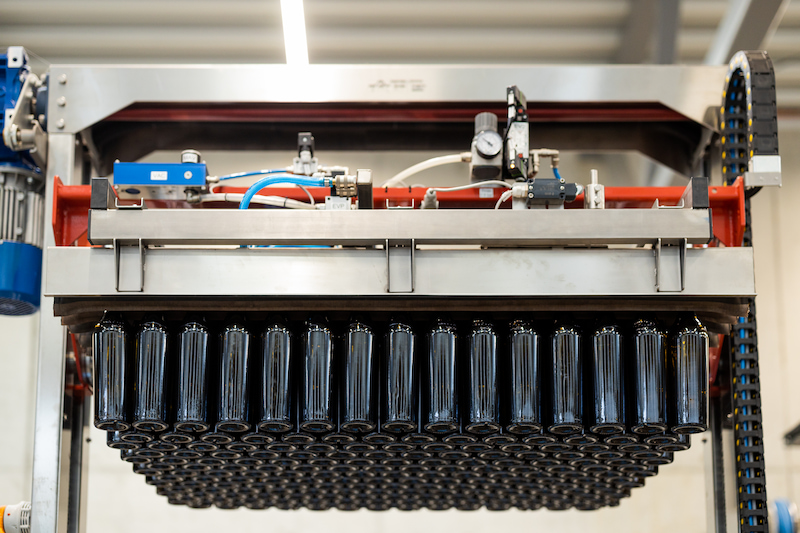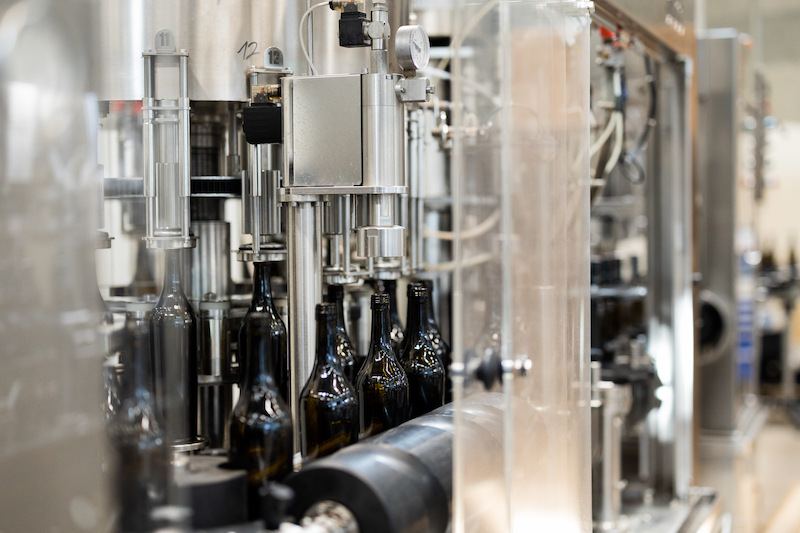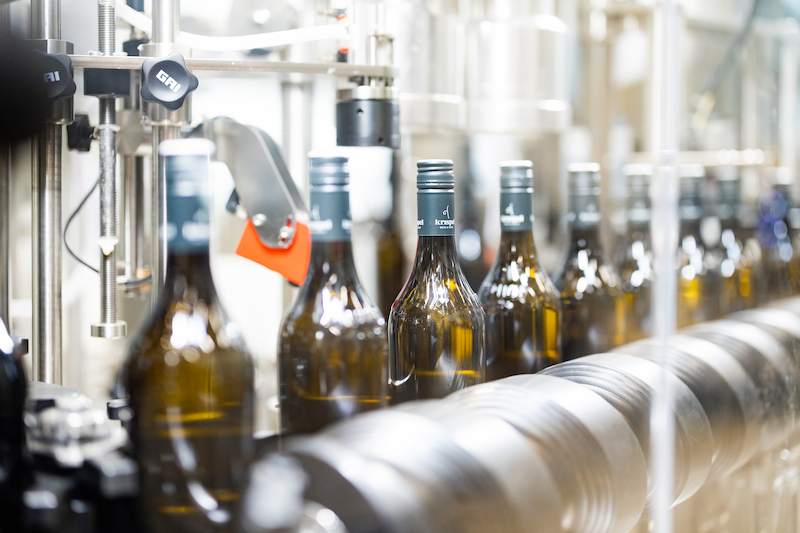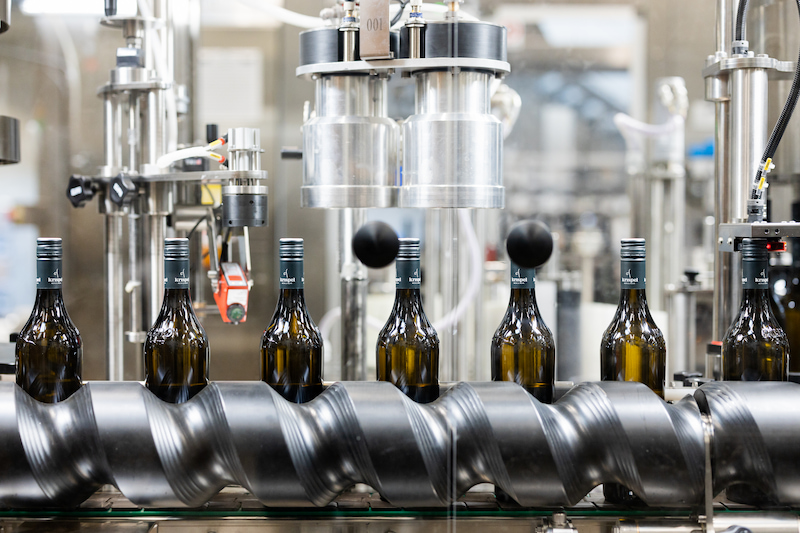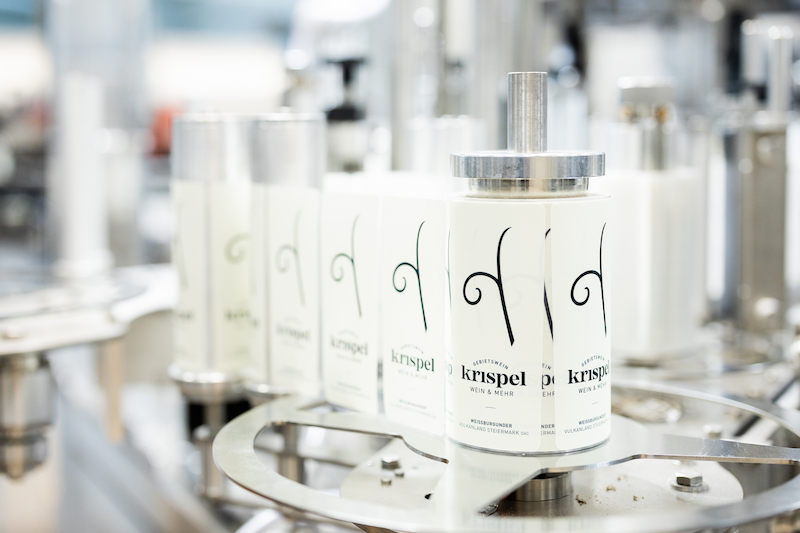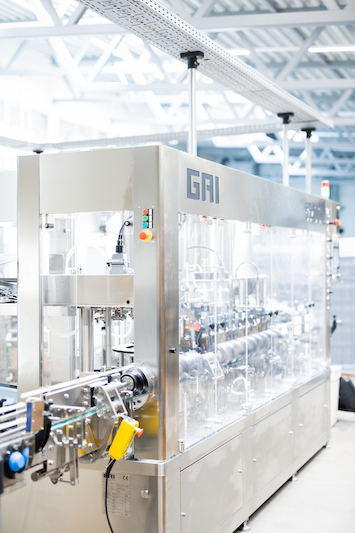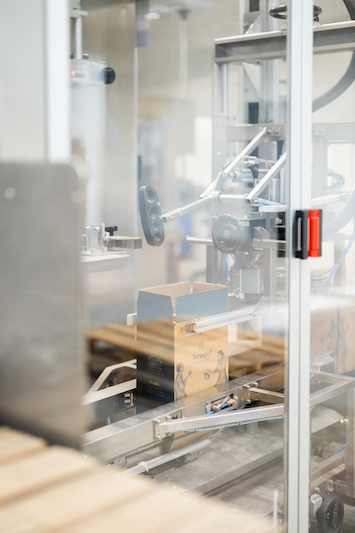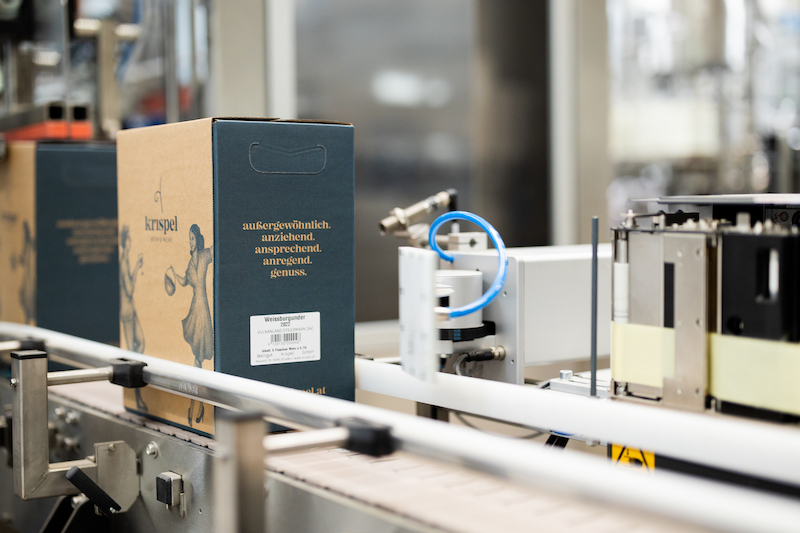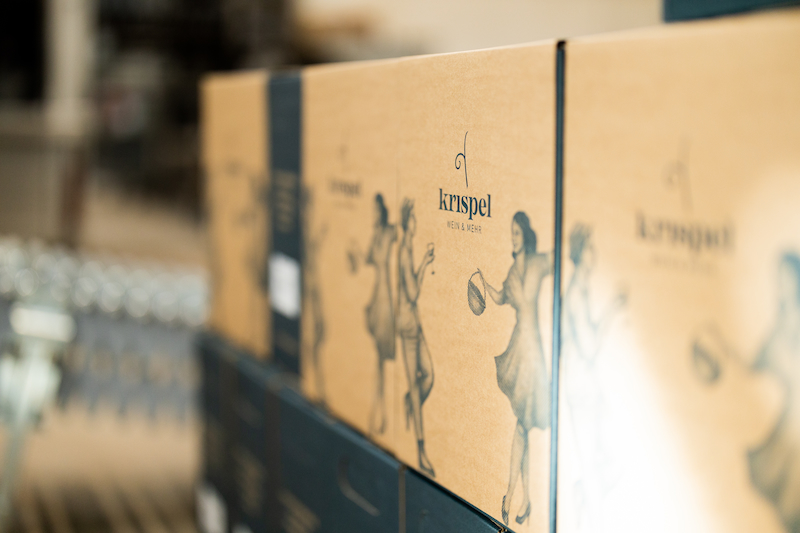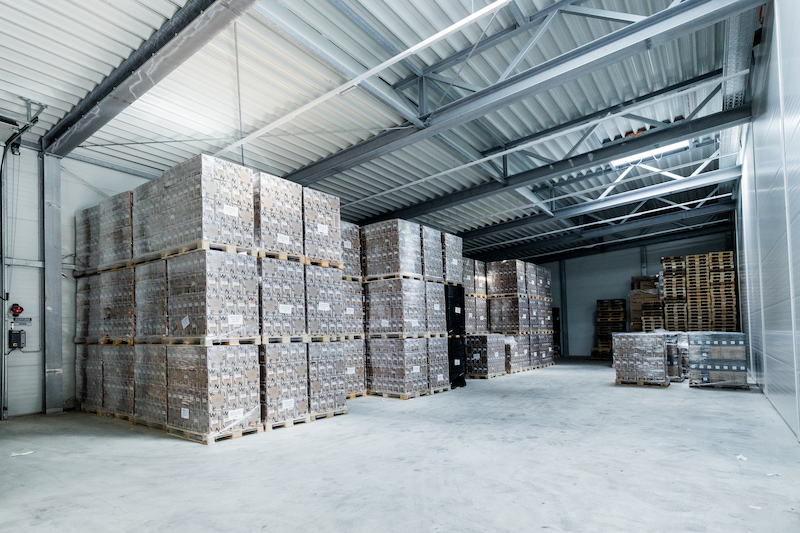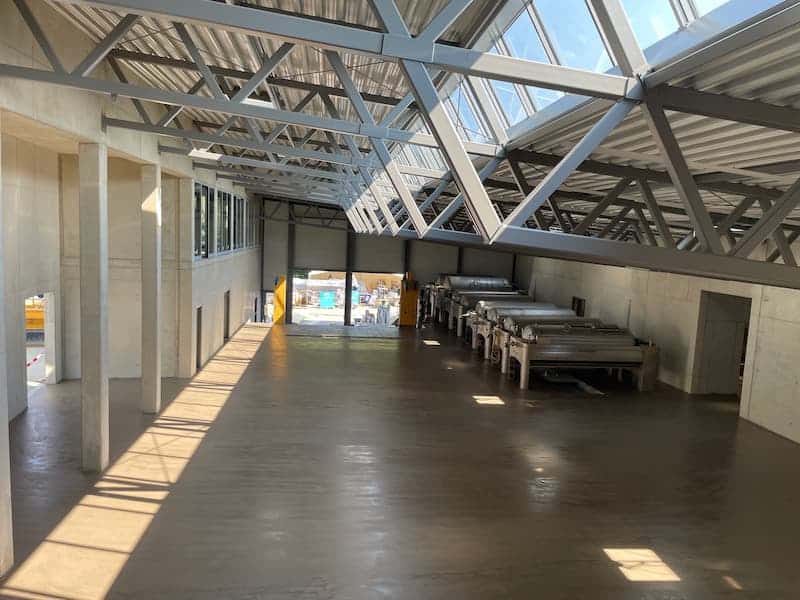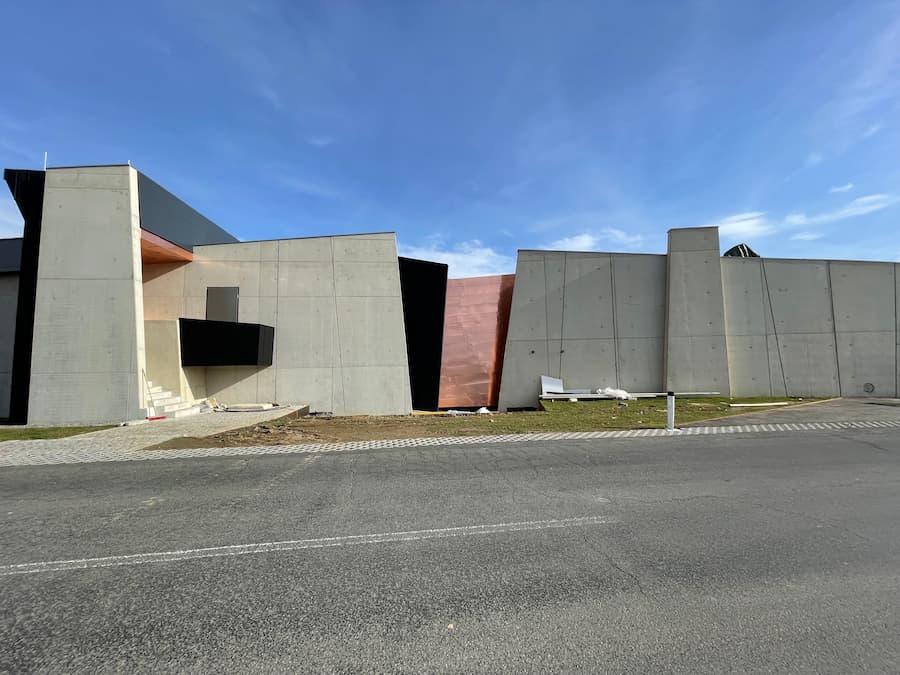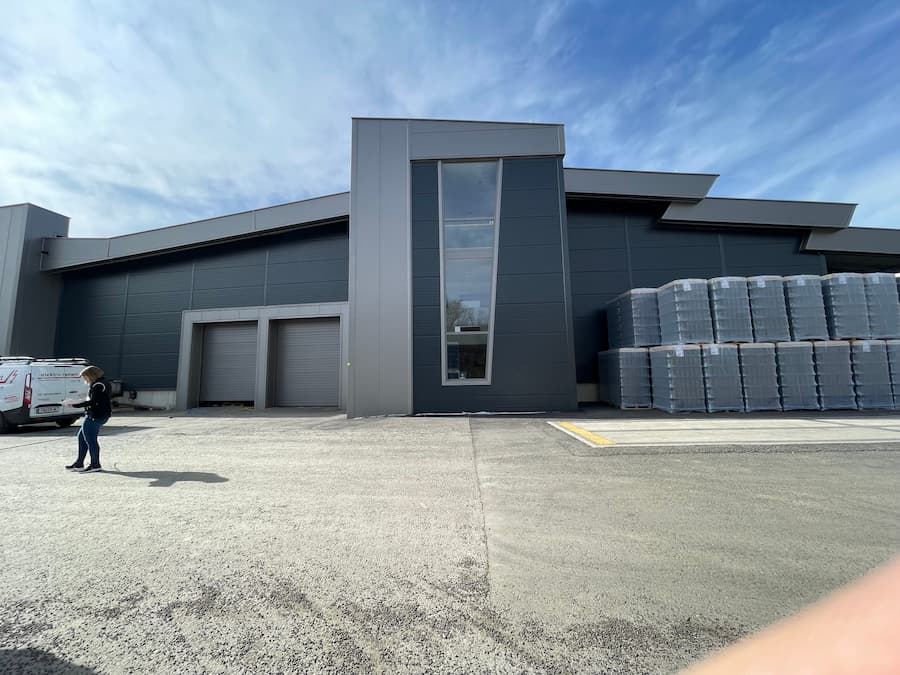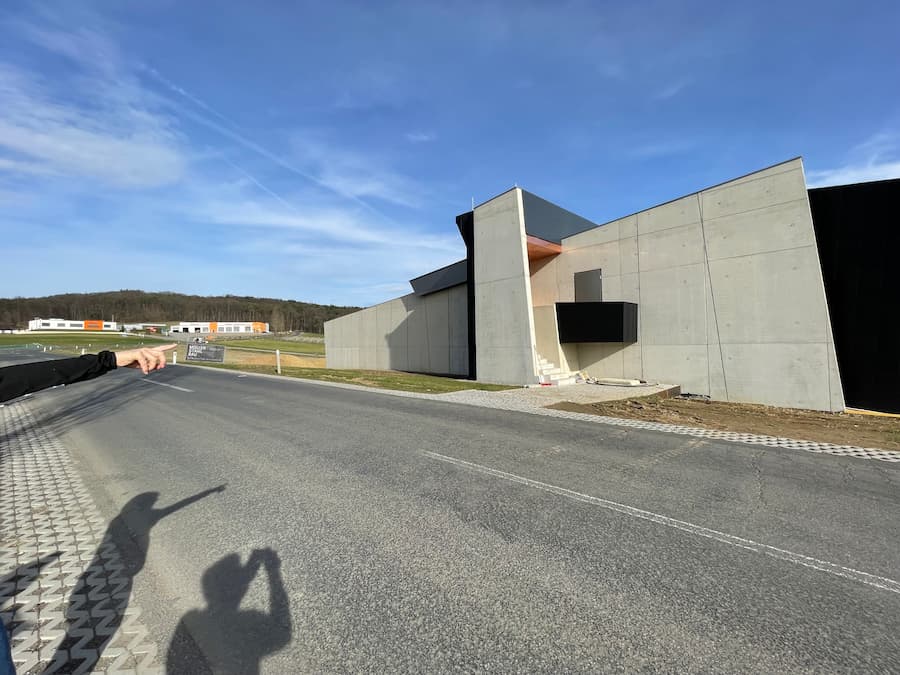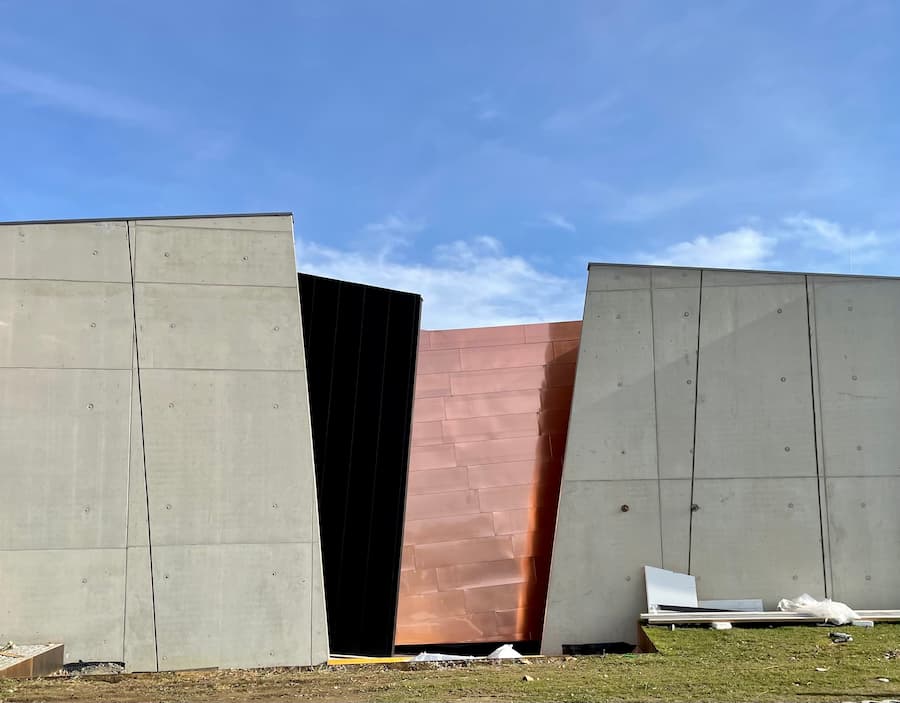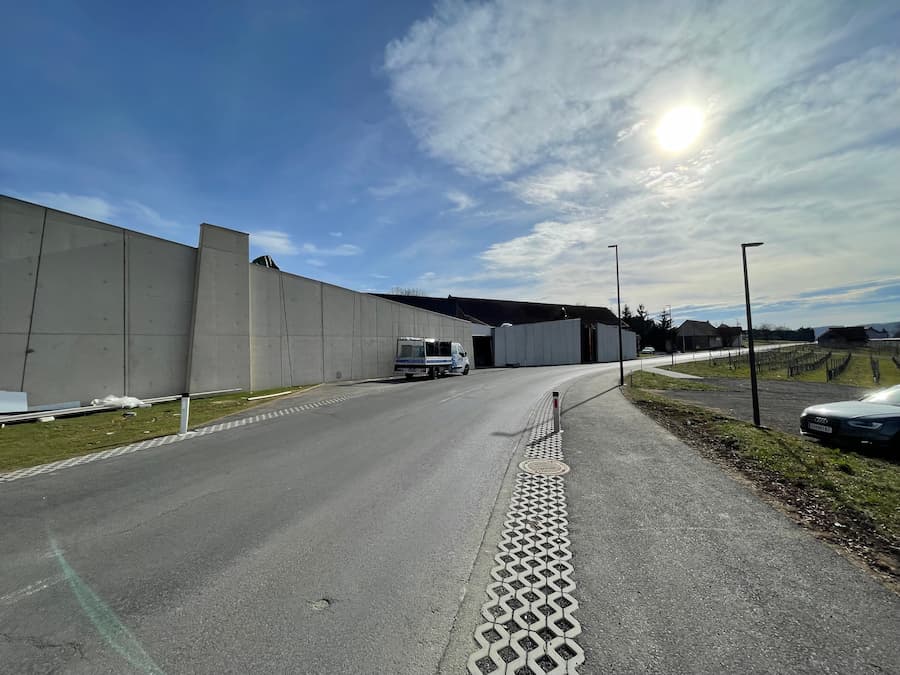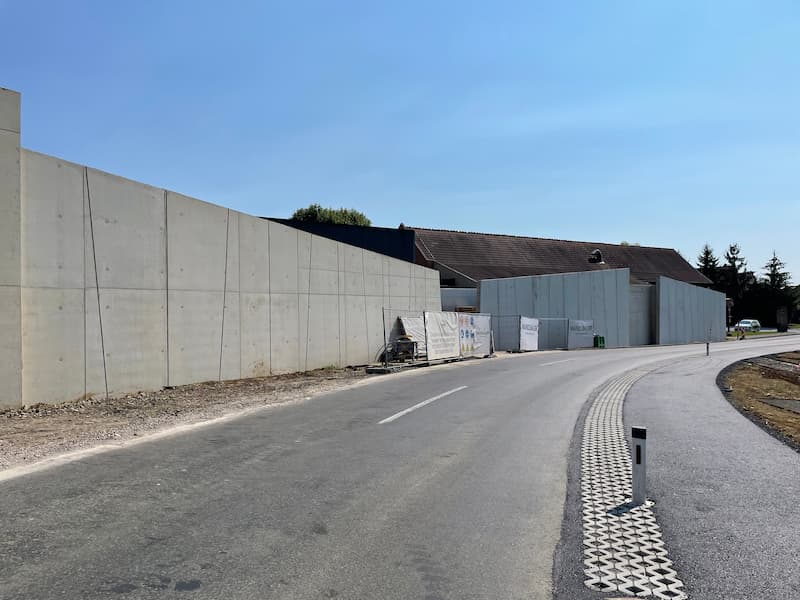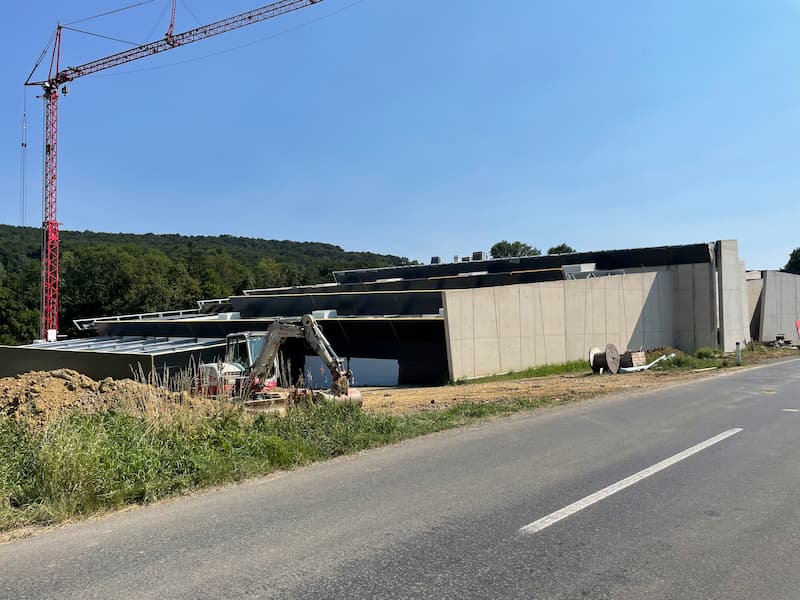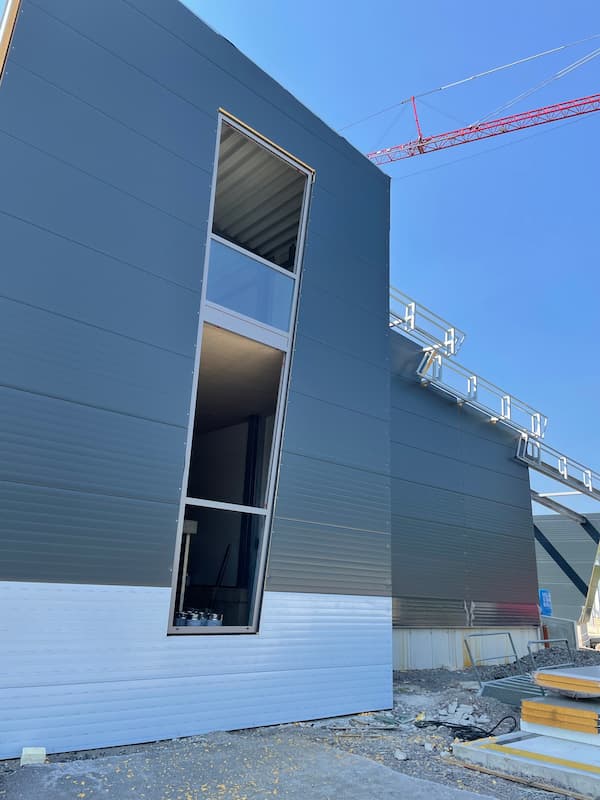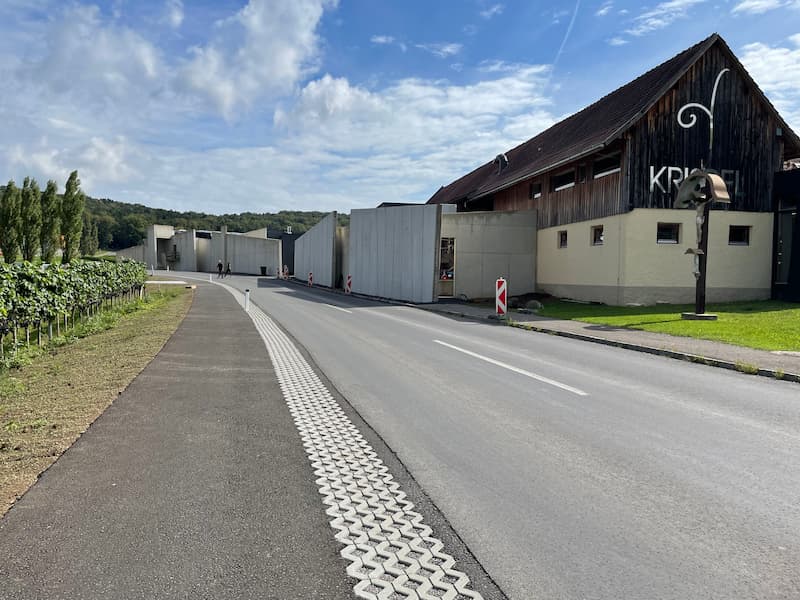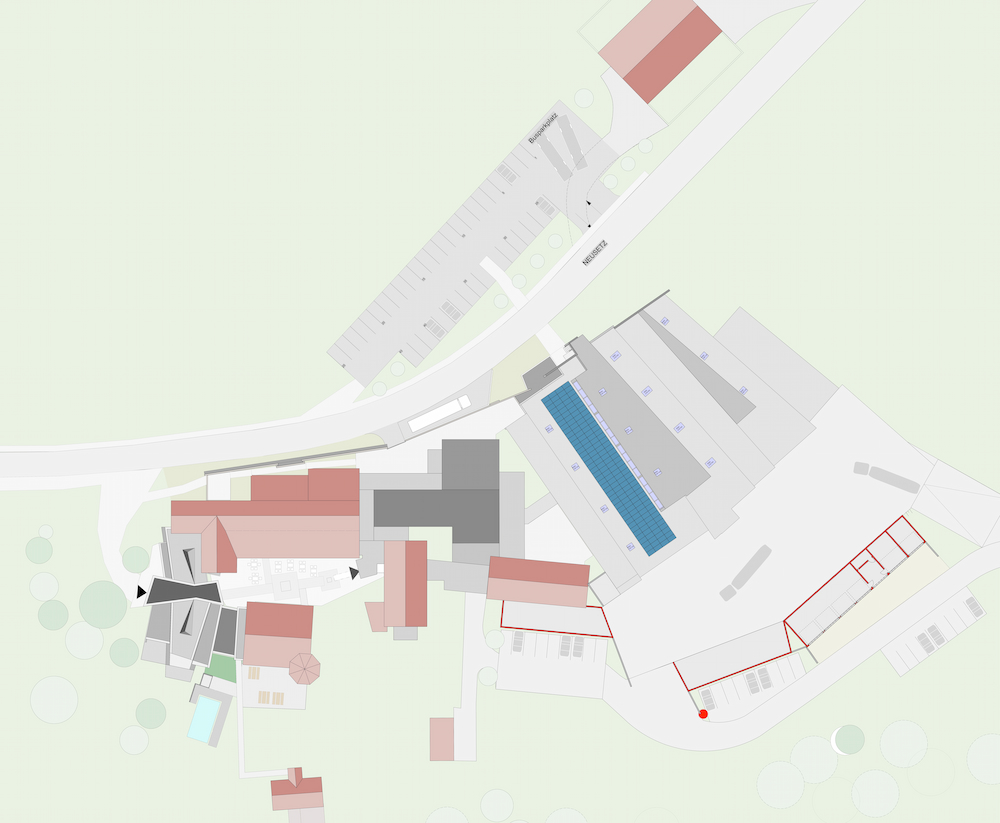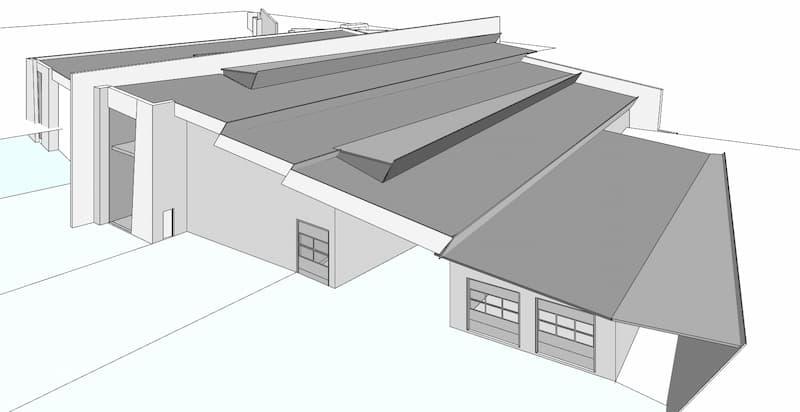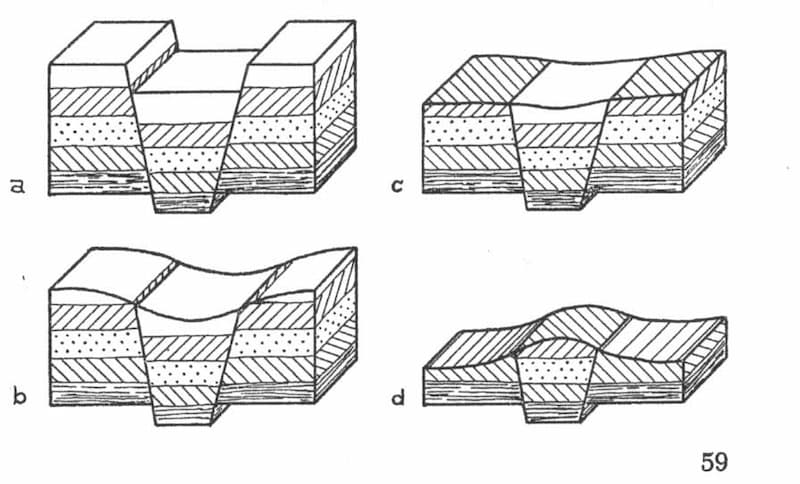The new wine cellar – or: The magma chamber of quality
What to do if the existing basement is bursting at the seams?
You build a new one and immediately rethink this place. Because we like to look forward and because challenges like these are always an opportunity. But what does that mean in detail: we have expanded our storage and production areas to approx. 3,400 m2 and combined them under one roof. The new is added to the existing and enables us to expand capacities and improve quality. This goes hand in hand and is anything but a contradiction in terms. It is made possible by the small structure of the Vulkanland region and the cooperation with many regional grape producers. The new cellar creates the greatest possible transparency and smooth processes. From the delivery of the manually harvested grapes to weighing and further processing. The grapes then pass through the heart of our new production line – the optical grape sorting system. Here, damaged berries are automatically detected and sorted out using compressed air. The purchased grapes fare no differently than the own grapes from the Orts- and Riedenwein range. An increase in quality that we have been wishing for for a long time and that is unique in Styria.
As far as the architecture of the new building is concerned, we wanted to integrate the wine cellar into the existing ensemble and at the same time make a statement. Everything we do today and in the future we owe to one fact: volcanism and the power that has always arisen from it. Our buildings are an authentic and modern expression of this. The theme of the architecture is plate tectonics. Formal distortions and folds run like a red thread through the entire complex, which despite its size is integrated naturally into the landscape.
We would be happy to tell you more about it on site.
Some impressions (Pictures: © Madison and Brobots)
building specification and design by weidemann architektur
The Krispel winery, which has been developing and gradually expanding for over 30 years and produces high-quality products, has been expanded with a new production hall.
COMPLETE COMPLEX
The existing buildings are brought together to form a design unit by a street-side development. The facade along the street connects the new production hall as the place where the wine is made with the entrance building that gives access to the enjoyment. The facade panels made of exposed concrete form the shapes of tectonic plates that have shifted and warped as a result of earth movements. The incisions provide a glimpse of the volcanic that is about to erupt: the glowing is reflected in the luster of the copper surfaces, the solidified in the matt black shapes and surfaces. The volcanism forms the basis for the local climate and the terroir of the vines. Through him the tender sprout grows.
NEW PRODUCTION HALL
In order to meet the increased demand, the bottling plant, a bottling and dry storage and the associated functions for logistics and personnel will be located in the new building.
The areas of production and storage are combined under one roof and connected to the existing areas with the appropriate pathways. In the new hall, additional settling tanks will be arranged and another 8 grape presses will be housed. An attractive guided tour is planned, in which information about the region and how the wine is made is conveyed and a wine presentation can also take place.
The large-scale new building has a design relationship with the entrance building, which already followed the theme of the plate tectonics of the Vulkanland region. The building is naturally integrated into the landscape through formal distortions and folds in the roof.
THE DESIGN FOCUS IS ON THE STREET FACADE AND THE ROOF LANDSCAPE
The forms of the roof landscape take up the geological process of vertical and horizontal shifts caused by volcanism. Thrusts and thrusts shape the shape of the roof, which appears folded and peaks where the magma chamber is about to erupt in nature. There is also access for visitors to the hall, from which you have an overview of the production area.
